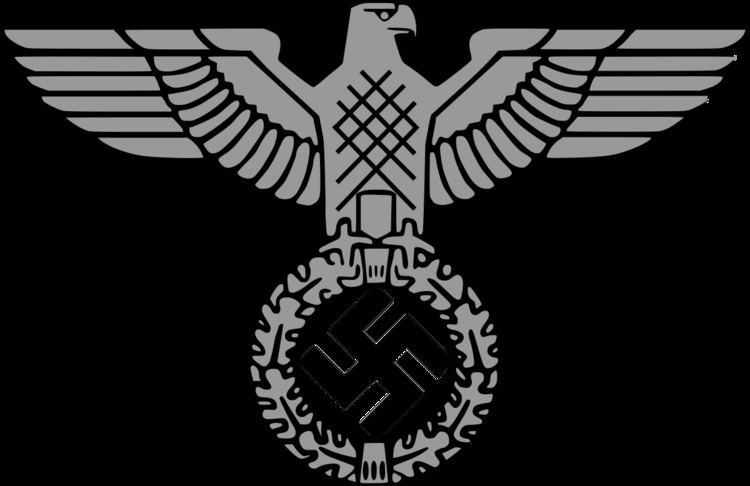 | ||
The 20th century German National Socialist Party made extensive use of graphic symbolism, especially the Hakenkreuz (swastika), which was used as its principal symbol and, in the form of the swastika flag, became the state flag of Nazi Germany.
Contents
Other symbols employed by the Nazis include:
The Nazis' principal symbol was the swastika flag. The black-white-red colour scheme is based upon the colours of the flag of the German Empire. The colour scheme was commonly associated with anti-Weimar Republic German nationalists following the fall of the German Empire. The Nazis denounced the black-red-yellow/gold flag of the Weimar Republic – which now is the flag of Germany. In Mein Kampf Adolf Hitler defined the symbolism of the swastika flag: the red represents the social idea of the Nazi movement, the white disk represents the national idea, and the black swastika, used in Aryan cultures for millennia, represents "the mission of the struggle for the victory of the Aryan man, and, by the same token, the victory of creative work."
Runic letters
Letters of the historical runic alphabet and the modern Armanen runes have been used by Nazism and neo-Nazi groups that associate themselves with Germanic traditions, mainly the Sigel, Eihwaz, Tyr (c.f. Odal (see Odalism) and Algiz runes.
The fascination that runes seem to have exerted on the Nazis can be traced to the occult and völkisch author Guido von List, one of the important figures in Germanic mysticism and runic revivalism in the late 19th and early 20th centuries. In 1908, List published in Das Geheimnis der Runen ("The Secret of the Runes") a set of 18 so-called "Armanen Runes", based on the Younger Futhark, which were allegedly revealed to him in a state of temporary blindness after a cataract operation on both eyes in 1902.
In Nazi contexts, the s-rune is referred to as "Sig" (after List, probably from Anglo-Saxon Sigel). The "Wolfsangel", while not a rune historically, has the shape of List's "Gibor" rune. Runic "SS" was the symbol of the Schutzstaffel.
Continued use by neo-Nazi groups
Many symbols used by the Nazis have further been appropriated by neo-Nazi groups, including a number of runes. Neo-Nazis also employ various number symbols such as:
14 and 88 are sometimes combined with each other (i.e. 14/88, 8814, 1488).
